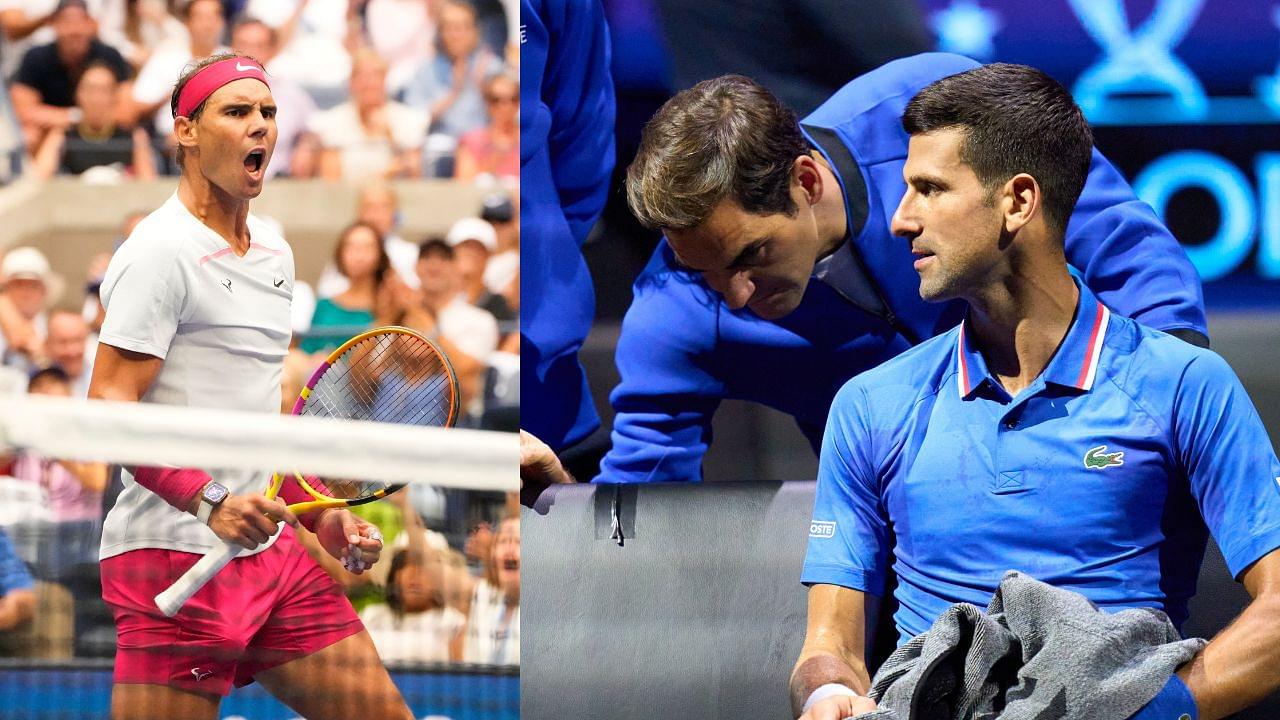Rafael Nadal was arguably the player tennis needed in the mid-2000s when Pete Sampras had retired and Andre Agassi was on his last legs. No upcoming superstars at the time could sustain and have a transcendental-like impact in the sport apart from Roger Federer. The men’s game arguably was in threat of getting stale as Federer’s monopolistic domination, while great for some enthusiasts, wasn’t a good sign in the years to come.
But Nadal, quite to the shock of many critics who slammed the physicality involved in his style of play and being a one-trick pony on clay courts, went on to prove mostly all theories and myths about him wrong. The Spaniard made a place of his own in the tennis world, breaking Roger Federer’s dominance. However, many a times, Rafael Nadal ended up as the second best player in the world as per rankings and public perception alike, often to Roger Federer and Novak Djokovic. Here are 5 reasons why Nadal did not remain World No.1 for as many weeks as the other members of the ‘Big Three’.
Rafael Nadal suffered from injuries in 2009
Out of the 209 weeks that Rafael Nadal was No.1 in the ATP rankings, the first time he achieved the feat was in August 2008, which lasted till July 2009. However, Rafael Nadal lost in the Round of 16 to Robin Soderling, failing to defend his French Open title in 2009. In his autobiography, Nadal revealed that he was suffering from a knee injury and coupled with some personal issues, he was not mentally and physically ready to play tennis around that time.
Adding salt to injury, Rafael Nadal had to withdraw from the Wimbledon Championships, which was won again by Roger Federer. Like in 2008 when Nadal beat Federer at Wimbledon to overtake him as No.1, the Swiss legend did the same to him in 2009. The 22-time Grand Slam champion’s first reign as World No.1 lasted 46 weeks, which is nearly a year.
Novak Djokovic’s ‘Golden’ years in 2011 and 2015
Typical of Rafael Nadal as seen over the years, he bounced back in 2010 to win 3 Grand Slam titles and become World No.1 again for an incredible 56 weeks between June 2010 and July 2011. However, 2011 was equally known to be Novak Djokovic’s year as he won 3 Grand Slams of his own and won 70 out of his 76 matches he played. As a result, the Serbian took over Nadal at the top of the rankings for the following 53 weeks. It meant that Rafael Nadal pretty much had to deal with both Roger Federer and Novak Djokovic in their prime.
It was a similar case in 2015. While Nadal wrestled back the No.1 ranking from Djokovic in an outstanding return to the game from October 2013 to July 2014, the 23-time Grand Slam champion’s consistency and fitness levels worked in his favor. Novak Djokovic once again took over from Rafael Nadal and what followed soon after was a season of domination from the former, that is remembered till date by fans as he held the Australian Open, French Open, Wimbledon and US Open titles at the same time until he lost to Sam Querrey famously at the Wimbledon 2016.
If 2015 and the first half of 2016 were the most memorable for Djokovic, they were the worst-ever for Nadal since he could not win a single Grand Slam nor any clay or hard court titles. Appendix and wrist injuries did not help the Spaniard’s cause as he lost matches he should have won and Djokovic dominated their rivalry too.
Roger Federer’s resurgence in 2017 and 2018
Not many would have predicted that Roger Federer would turn back the clock after turning 35. However, he defied all odds by defeating Rafael Nadal in the 2017 Australian Open final. While Nadal himself did the unthinkable by getting back to the top of the world in August 2017, it was Federer who was proving to be hard to get past for him as well as others, in an ironic turn of events.
As a result, although Nadal did win the French Open and the US Open 2017, his reign at the top once again did not live up to expectations, ending within just 6 months. At 36, Federer became World No.1 while Nadal was reduced to being the second best, which took both the players’ fans back nearly by a decade, showing the resilience and fitness levels of both the players.
Remarkably, apart from the Australian Open final, Roger Federer defeated Rafael Nadal in all their meetings in 2017 in straight sets. That was a career first for both the players since Nadal was the more dominant player in their rivalry prior to that. It made the Spaniard miss out on to winning 3 Masters 1000 titles that year. And to top it all, Nadal and Federer were sharing the No.1 ranking, out of which the 14-time French Open champion ruled for a total of 29 weeks between February 2018 and November 2018, which was more than his first biggest rival in the sport.
Rafael Nadal got selective with tournaments post Covid-19 pandemic
Rafael Nadal had an impressive 2019 in which he won the French and US Open titles again, while also having made it to the Australian Open final and Wimbledon semifinals. But since the ATP rankings changed, which meant more pressure on players defending titles. As a result, Nadal did get back the World No.1 ranking again from Djokovic between November 2019 and February 2020, but lost it in just 13 weeks to him.
However, Covid-19 pandemic struck and many tournaments in 2020 got cancelled. When action returned, Rafael Nadal did not wish to participate in the US Open and French Open back to back in the autumn season due to concerns surrounding the deadly disease. For obvious reasons, Nadal chose the latter and won his 20th Grand Slam. But not defending his US Open title cost Nadal dearly, as Djokovic continued to be No.1 for having at least made it to the final in Paris and the Round of 16 in New York City.
Rafael Nadal failed to capitalize on remarkable first half of 2022
After a disappointing 2021 which saw Rafael Nadal not only turning 35 but winning no Grand Slam and getting injured on his left foot, he roared back against all expectations in January 2022. Making the most of Novak Djokovic’s absence at the Australian Open, the Spanish champion defeated Daniil Medvedev in a thrilling 5-set final to win his 21st Grand Slam title. Nadal also won 20 matches in a row at the start of the season and powered his way to a record 14th French Open championship, despite suffering from a variety of injuries in the process.
Unfortunately, even the gritty Nadal had to retire before the Wimbledon semifinals, being in top form on the grass surface. His major disappointments were not being able to go beyond the Round of 16 in the US Open and the round robin stage of the Nitto ATP Finals besides no Masters 1000 titles wins in 2022. It meant that the Spaniard could not go past neither Daniil Medvedev nor the young Carlos Alcaraz, who toppled his fellow countryman and hero to clinch the year-end No.1 ranking.
Once again, Rafa had to stay content finishing second, although he did create a record of being the oldest No.2 ever in the ATP rankings, which is still a testament to his longevity and competitiveness. His never-say-die, Spanish bull mentality is something many tennis lovers are waiting to watch with bated breath again in 2024 as he has missed out on most of this year due to a hip injury.








